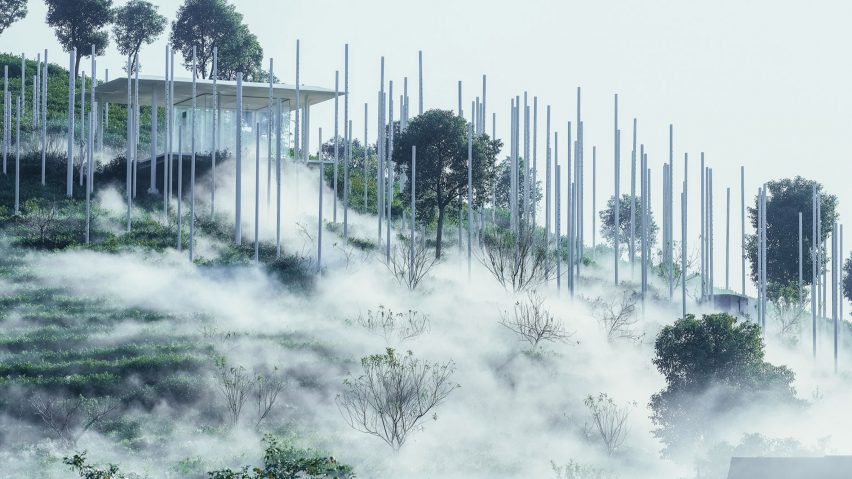
Plat Asia explores "boundarylessness" with Cloud Tea Room in China
Beijing studio Plat Asia has created a contemporary teahouse for a resort in Huzhou, China, which draws on the transience of clouds and is surrounded by an undulating steel-pole installation.
Located on a secluded hillside within Xisaishan resort's tea fields, the Cloud Tea Room sits within the 910-square-metre network of poles that periodically releases water vapour to create a fog-like effect around it.
This is designed by Plat Asia to help blur the boundary between architecture and landscape.
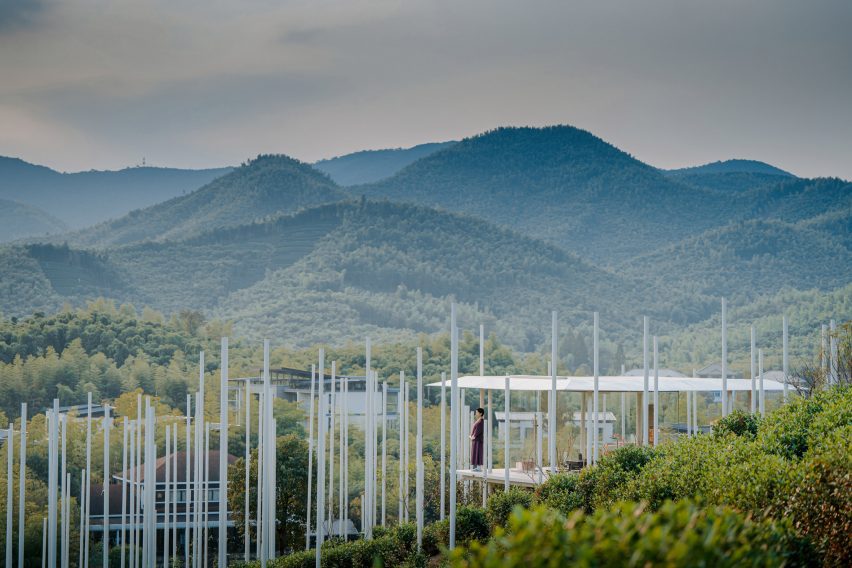
"[A] cloud is a temporary natural phenomenon, constantly and circularly varying everyday," Plat Asia cofounder Donghyun Jung said.
"The steel poles are for weakening the boundary of space and blurring the interiors and exteriors, closely [connecting them] to the surroundings," he continued. "Fog creates a temporary scene that emerges, constituting a new landscape system."
Plat Asia also looked to Shan shui paintings, which primarily depict natural settings with soft edges, and traditional Chinese pavilions to inform the design.
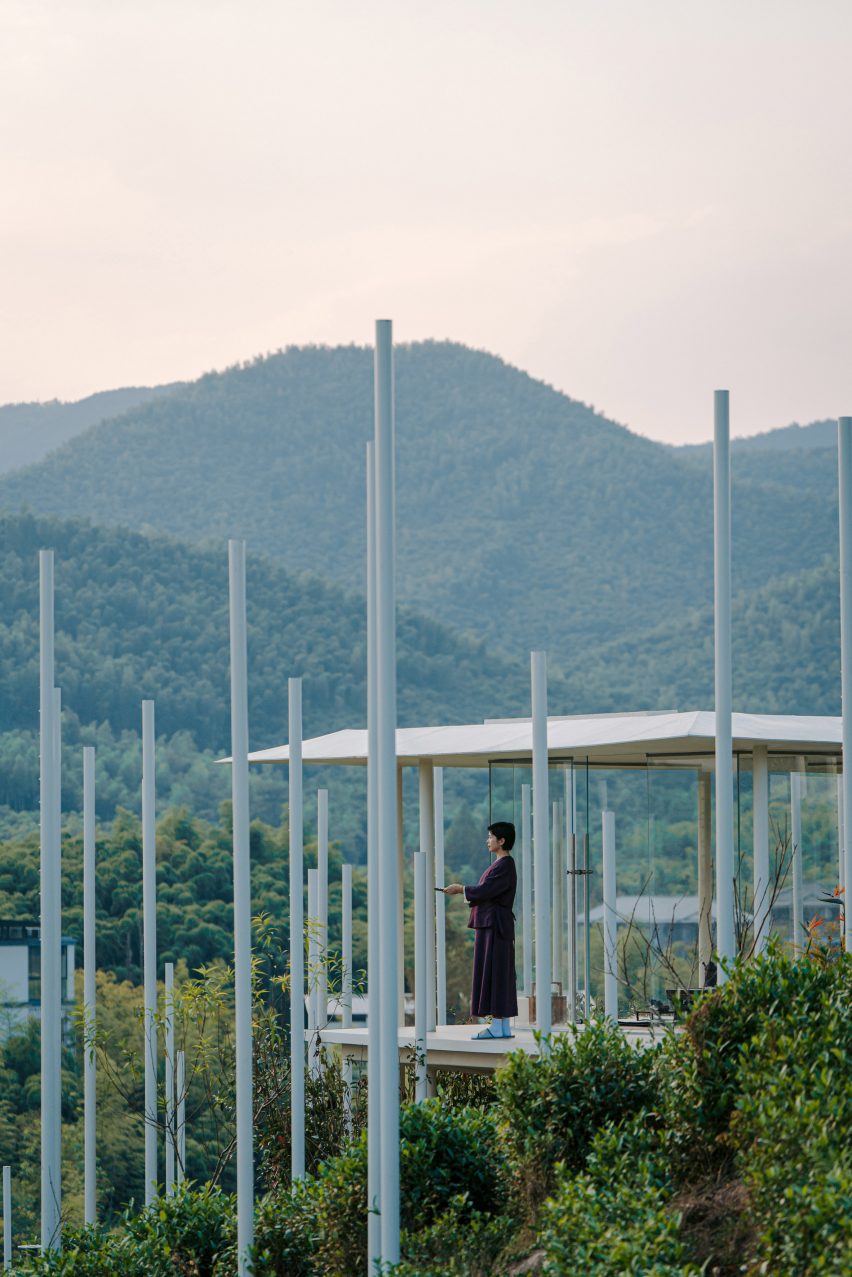
"[Chinese pavilions] present a primitive architectural prototype characterised by a blurred edge," Jung said. "The interiors derive from [this concept], which responds to the 'boundarylessness' of landscape and installation."
"The nine-metre-square tea room interior is a continuation of the landscape, and the landscape is a continuation of architecture," Jung continued. "This project gives a whole experience that is more critical than the border."
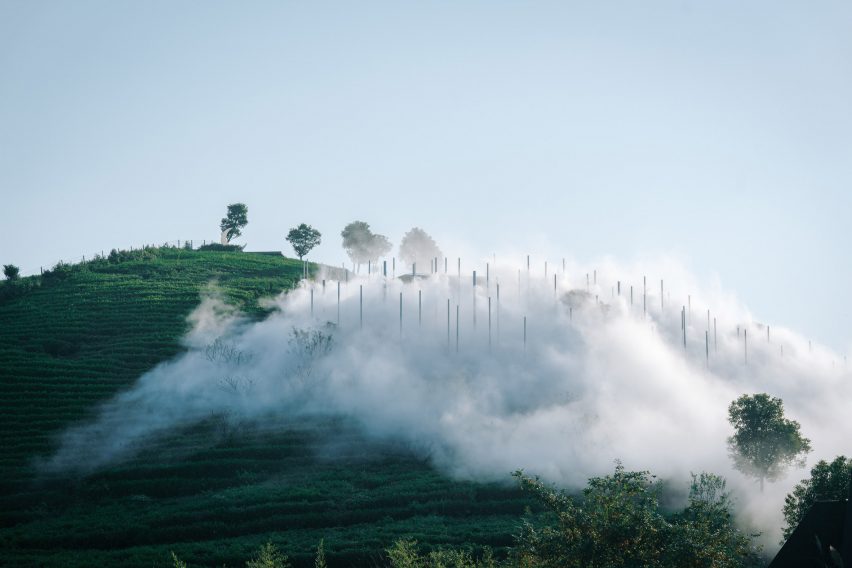
Floor-to-ceiling glazing encloses Cloud Tea Room, allowing visitors to visually connect with the natural environment from all directions.
It is capped by two rectangular planes for the base and roof, while the whole structure is raised by columns resembling the surrounding poles. The poles sit 1.2 metres apart and at varied heights to recreate the formlessness of clouds.
Beyond producing the periodic fog, the poles also create a path for visitors to weave through on the journey to and from the tea room, which the studio hopes will invite them to slow down and relax.
"Answering the high-pressure and rapid lifestyles [of today], this tea room lets people release stress and enjoy slowing down in the hills," Plat Asia said.
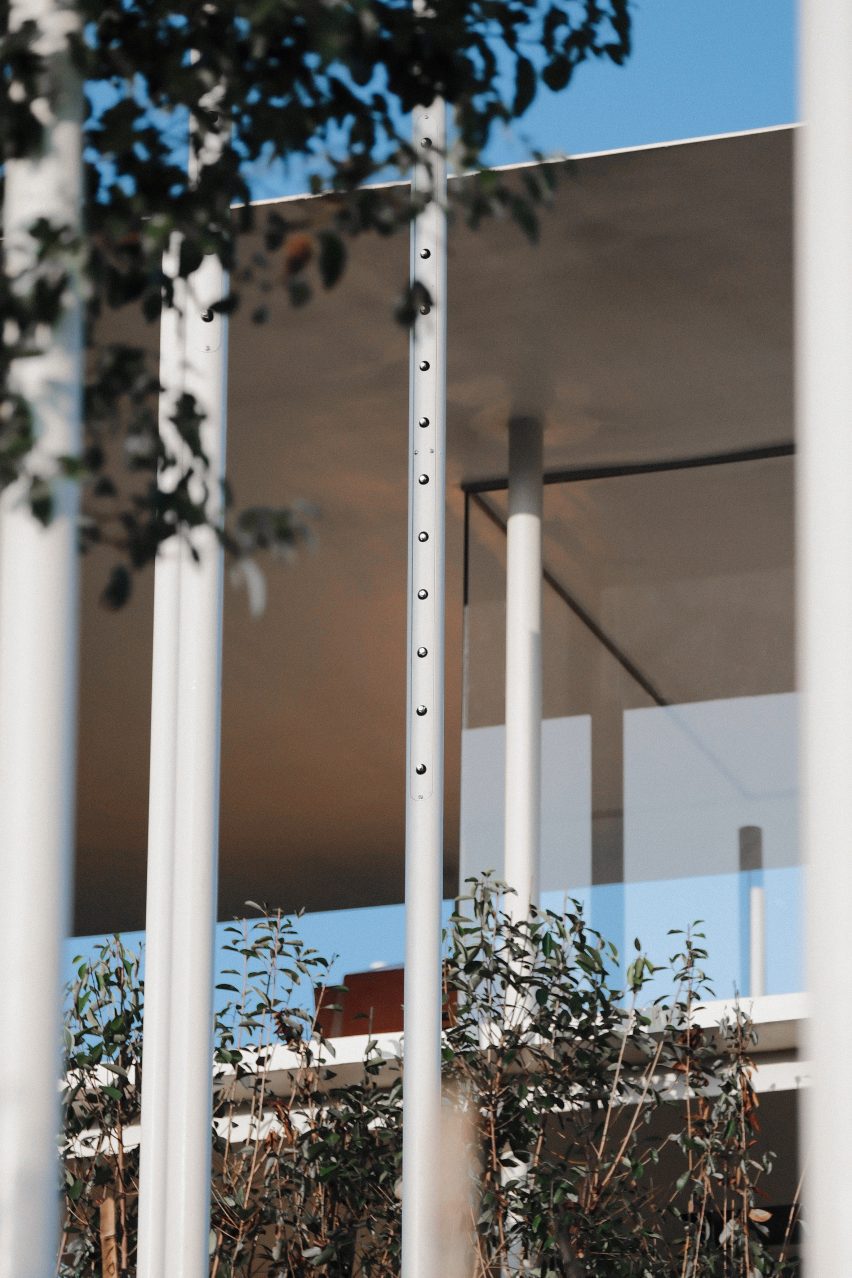
Plat Asia chose a restrained material palette to achieve a minimalist aesthetic at Cloud Tea Room. This consists primarily of glass, white-coated steel and self-levelling cement for the base, finished with a tatami bamboo mat and matte acrylic boards.
According to the studio, this pared-back approach is intended to simultaneously reflect a "concept of contemporariness and primitiveness".

Plat Asia was founded in Beijing in 2010 by Baoyang Bian and Jung with a focus on contemporary oriental architecture and designing with nature.
Other recently completed teahouse projects include the Longquan Mountain Observatory in Chengdu, which is designed to resemble an "alien form", and another made from food waste by Mitsubishi Jisho Design for the 2023 Venice Architecture Biennale.
The photography is by Yixinjia, Fan Xiaoxu and Plat Asia.